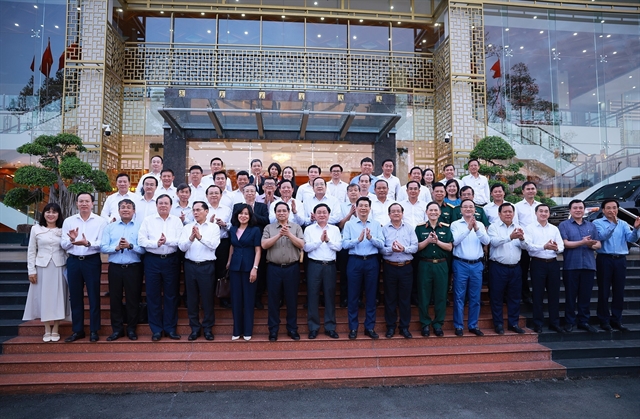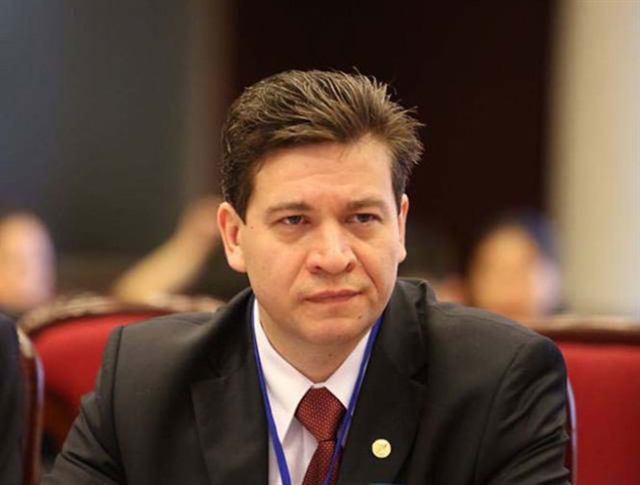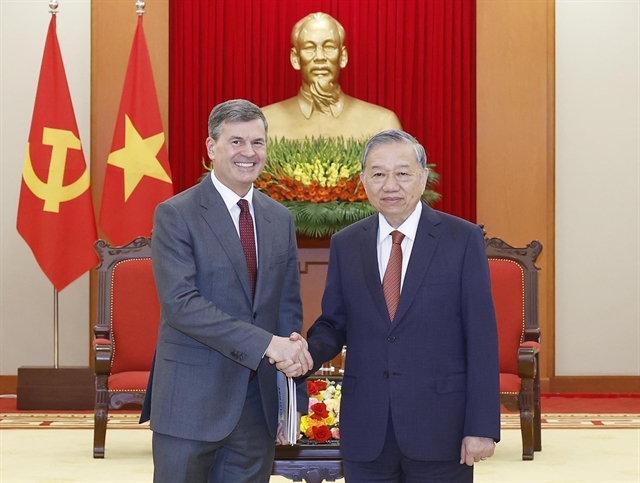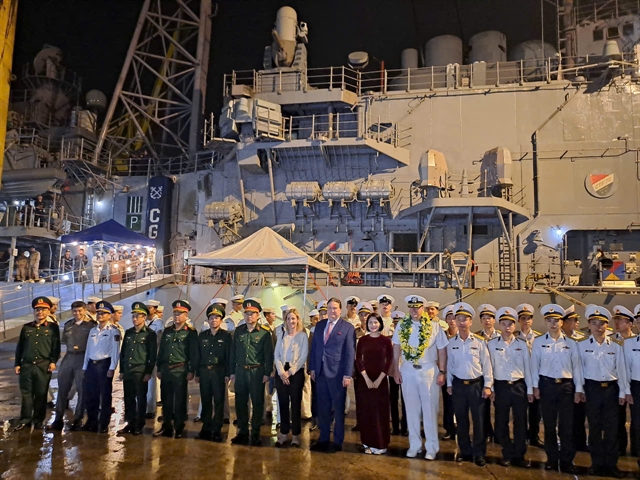 Opinion
Opinion

Professor Vladimir Kolotov, General Director of the Ho Chi Minh Institute of the Saint Petersburg State University, and Professor Carl Thayer from the New South Wales University shared their thoughts with Vietnam News Agency on the role of the Communist Party of Việt Nam (CPV) in Việt Nam’s revolution on the occasion of the CPV’s 90th founding anniversary.
Professor Vladimir Kolotov, General Director of the Ho Chi Minh Institute of the Saint Petersburg State University, and Professor Carl Thayer from the New South Wales University shared their thoughts with Vietnam News Agency on the role of the Communist Party of Việt Nam (CPV) in Việt Nam’s revolution on the occasion of the CPV’s 90th founding anniversary.

|
| Professor Vladimir Kolotov |
VN achieves high prestige under Party’s leadership: Prof Kolotov
As far as I am concerned, the Vietnamese revolution’s historic events and the CPV’s leadership have heightened the country’s prestige and stature.
With a new political combat method, the Vietnamese communists laid a foundation for national liberation campaign, gathering people of all walks of life to successfully conduct the 1945 August Revolution and establish the Democratic Republic of Việt Nam.
That victory and the nation’s path to national liberation served as an example for countries worldwide.
Việt Nam then overcame the US’s embargo following the 1975 victory thanks to the country’s policies and guidelines that helped protect its interests from external pressures, irrespective of national defence, economic, diplomatic or political pressures.
The CPV manifested its flexibility with the prompt issuance of the renovation policy. The country conducted economic reform amid difficulties with the ultimate goal of protecting national interests despite changes to conditions and strategies.
Việt Nam has never achieved high stature like now, which is a result of the CPV’s fight for national liberation, reunification and development, with high economic growth for many years.
CPV leads Việt Nam on path of independence and modernisation: Prof Thayer
In my opinion, the CPV has demonstrated leadership on 10 major occasions to free Việt Nam from foreign domination and to establish a reunified and independent Việt Nam.

|
| Professor Carl Thayer |
First, the Vietnamese revolutionaries who founded the CPV in February 1930 united other revolutionary organisations from the three regions of Việt Nam and became a truly national party.
Second, the CPV joined the Communist International in 1930 and assumed responsibility for struggle against colonialism across French Indochina, including Laos and Cambodia. The CPV demonstrated leadership by linking Việt Nam’s struggle with the world struggle against colonialism and imperialism.
Third, the CPV demonstrated its revolutionary credentials by supporting the peasants who rose up in revolt against the French to establish the Nghệ-Tĩnh Xoviet in 1930-31.
Fourth, the CPV took the lead against fascism and colonialism in 1941 when it founded the League for the Independence of Việt Nam and pursued a national-democratic or two-stage revolution.
Fifth, the CPV took the decisive step of seizing the opportune moment and successfully launched the August Revolution that led to the declaration of Việt Nam’s independence on 2 September 1945. Việt Nam became one of the first colonies to do so this, contributing to the worldwide struggle against colonialism.
Sixth, the CPV successfully led the war of resistance against French colonialism from 1946-54 by waging a people’s war. This culminated in the victory at Điện Biên Phủ in May 1954.
Seventh, the CPV took a bold step in negotiating with France to end their armed conflict at Geneva in 1954. Although Việt Nam was partitioned, the CPV had a firm base in North Việt Nam that had a capital city, Hà Nội, and a port to the outside world, Hải Phòng. The Democratic Republic of Việt Nam was linked to China and by rail to the Soviet Union. The CPV leaders (then Việt Nam Workers’ Party or VWP) were able to carry out land reform, agricultural collectivisation and begin the initial steps towards industrialisation.
Eighth, in January 1959 the VWP took the decision to resume armed struggle in South Việt Nam in order to reunify Việt Nam.
Ninth, the VWP took the lead in mobilising the Vietnamese people to successfully resist the US air war in the North by dispersing people from the cities and utilising advanced weapons from the Soviet Union and China.
Tenth, the VWP successfully prosecuted the war against the US in the South by matching the conventional strategy of the US and devising new means to achieve victory such as the 1968 Tết Offensive and the Great Spring Offensive in 1975.
Since reunification Việt Nam has modernised all elements of the Việt Nam People’s Army including the ground forces, the air defence-air force, navy and coast guard. — VNS




